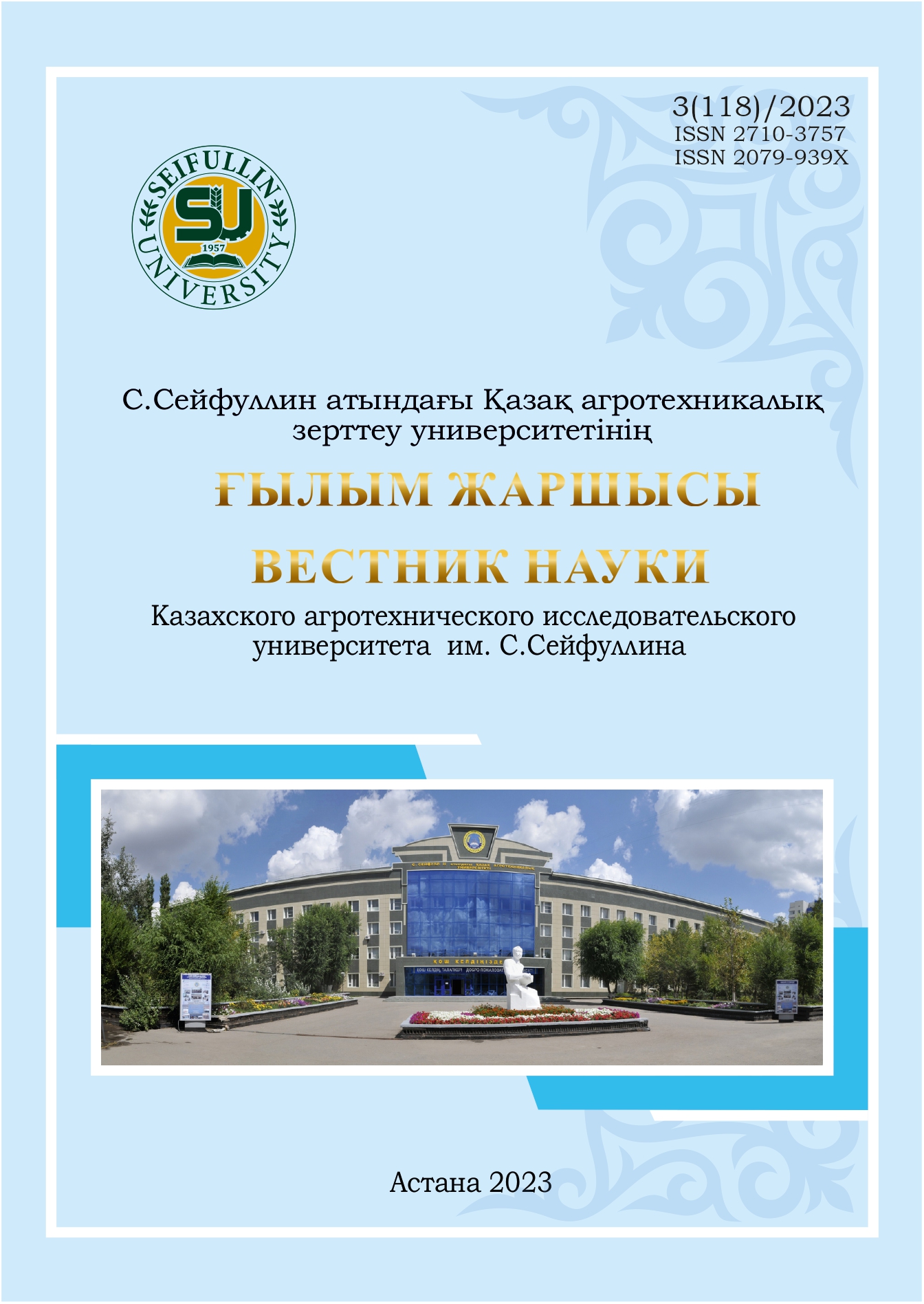INFLUENCE OF DIFFERENT FORMS OF MINERAL FERTILIZERS ON ACCUMULATION OF DRY MATTER AND YIELD OF FLAX IN THE CONDITIONS OF NORTHERN KAZAKHSTAN
DOI:
https://doi.org/10.51452/kazatu.2023.3(118).1441Keywords:
oilseed flax; biomass; yield of oilseeds; nitrate nitrogen; phosphorus; biometric indicators; mineral fertilizersAbstract
The relevance of the research is as follows, with a fairly high flax sowing area in the Republic of Kazakhstan in 2022 of 1,366.0 million hectares (53.1% of the sown area in the North Kazakhstan region), the average flax yield does not exceed 0.6 t/ha (world production - 0.87 t/ha), while the use of efficient production technologies allows you to get up to 1.5 - 2.2 t/ha. Currently, flax, even with a sharp drop in prices in the period 2022-2023, remains a highly profitable export crop widely used in industrial production. Thanks to this, the flax sowing area in the North Kazakhstan region in 2023 is kept at the level of the last 3 years, within 482,6 thousand hectares.
Scientific research consisted in a comparative study of the influence of types and norms of mineral fertilizers on the accumulation of biological mass and the productivity of oilseeds of oil flax. The research methodology involved field laying experiments in a hospital, as well as a laboratory assessment of the productivity of agricultural crops. According to the results of the study, high yields were ensured by complex variants of the P40N40 fertilizer super phosphate and nitroammophos with ammonium nitrate - 1.12 - 1.18 t/ha (exceeding the control by 0.32 - 0.38 t/ha). This yield is ensured by high structure indicators - the highest standing density, the number of bolls per plant, seeds per pod, as well as the weight of grain per plant. The practical value of the conducted research lies in obtaining reliable data on optimizing the mineral nutrition of oil flax, taking into account the use of complex fertilizer options, as well as nitrogen and phosphorus monofertilizers.

